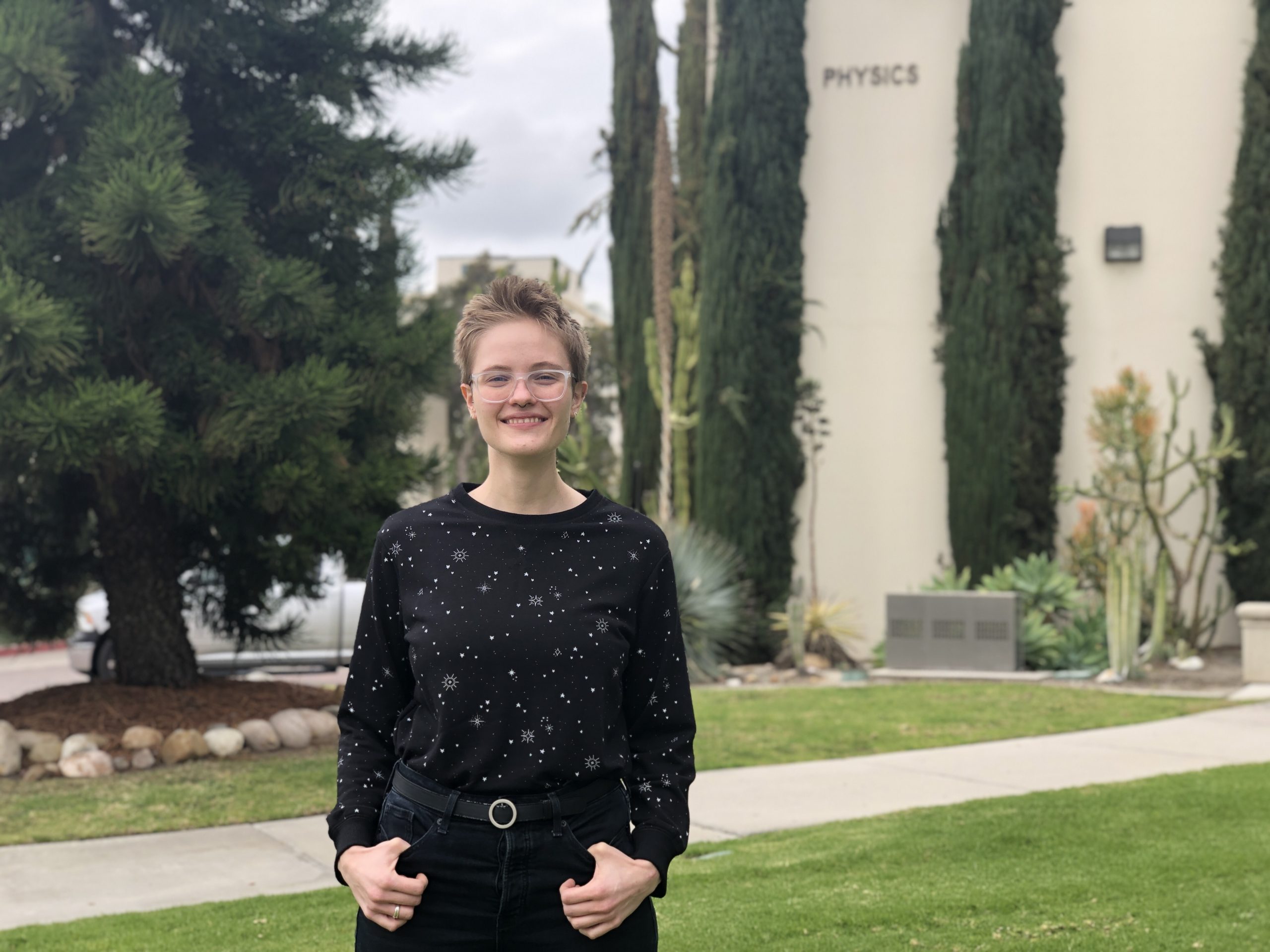
Junior transfer physics major Ky Putnam started out majoring in sociology in community college, full of doubts that they weren’t good enough to pursue science or engineering.
Simultaneously taking their first astronomy class and presenting an art gallery piece on stereotype threat – a fear of confirming negative stereotypes about one’s group identities – Putnam struggled with feeling they had to be an exemplary student to represent non-binary and femme-presenting folks in STEM.
Thankfully, the instructor of that class was a strong proponent of steering more students from marginalized backgrounds into STEM fields. This encouragement helped Putnam gain the confidence to take calculus and switch their major to physics.
Since transferring to San Diego State University, Putnam has had the best time, in large part due to joining the Society of Physics Students.
“People often think of tech and physics as being very dry and antithetical to any creativity. What I’ve learned from hanging out with physics students is how creative they are,” Putnam said.
This semester, in addition to expressing their creativity in the kitchen and through knitting, Putnam is conducting research on the particles inside neutrons and protons.
They are one of three students in a program, overseen by SDSU assistant professor Rodrigo Navarro Perez, that offers a stipend and training for underrepresented students interested in nuclear physics.
“I’ve grown so much doing research,” Putnam said. “I’ve learned a lot of coding since I first started.”
They are using a programming language called Fortran to conduct powerful calculations on subnuclear particles at the femtometer scale, about 100,000 times smaller than a single helium atom. These calculations will help determine whether experimental data matches up with theories of how these particles interact.
Putnam is excited to continue exploring other research areas to decide what to focus on in a PhD program after they graduate, a future that feels much closer to reality than the dream they had while working in retail less than a year ago.